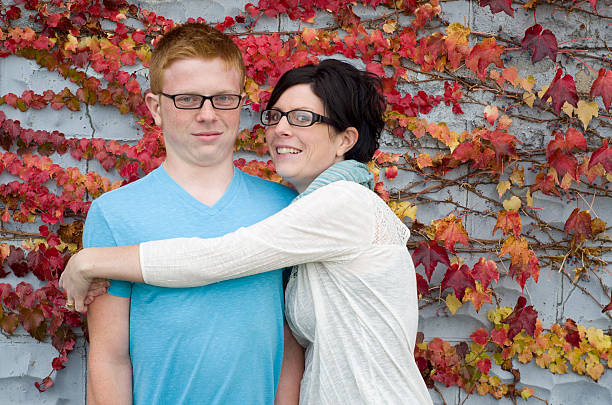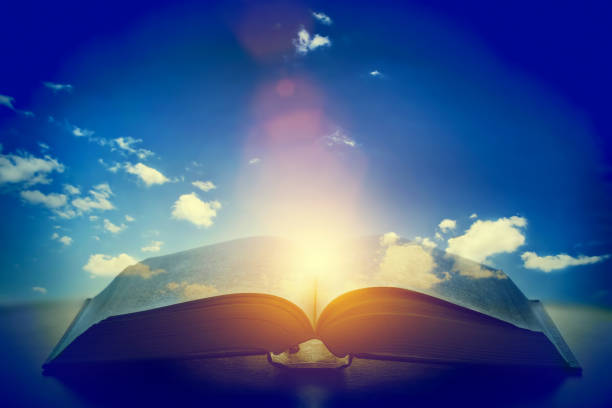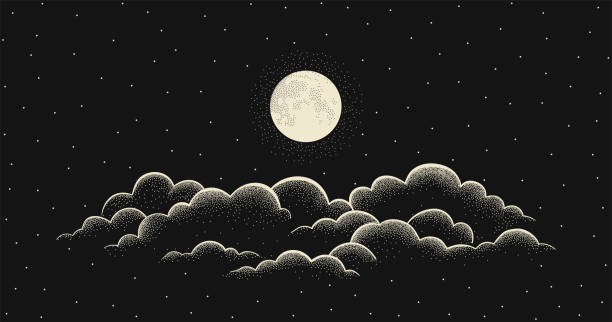How To Write Awkward Scenes (12 Important Steps)
Introducing “How to Write Awkward Scenes,” a guide to the nuanced art of infusing storytelling with moments that captivate, cringe, and resonate.
Awkwardness, that peculiar yet familiar sensation, serves as an unspoken gateway to the human experience. Within these awkward scenes, writers can explore the rich tapestry of human interactions, delving into the complexities of social discomfort, situational unease, and the myriad shades of emotional vulnerability.
This guide is designed to be a creative compass, a tool that empowers writers to navigate the delicate balance between humor and discomfort, using awkwardness as a narrative catalyst.
Together, we will journey through the intricacies of character development, dialogue, pacing, and emotional depth, unlocking the secrets of crafting scenes that leave a lasting imprint on readers.
So, let’s embark on this exploration of the cringe-worthy, the authentic, and the profoundly human, embracing the art of writing awkward scenes to create stories that resonate with depth and relatability.
How To Write Awkward Scenes
Writing awkward scenes can be a valuable narrative tool in storytelling, as they add depth to characters and create realistic, relatable moments. Here’s a step-by-step process on how to write awkward scenes effectively:
Understand the Purpose
Before you start, be clear about why you want to include an awkward scene. Awkward moments can serve various purposes in a story, such as character development, conflict, humor, or tension release. Determine the specific goal for your scene.
Know Your Characters
To create authentic awkwardness, you must have a deep understanding of your characters. Know their personalities, traits, backgrounds, and motivations. Consider what would make them uncomfortable or react awkwardly in a given situation.
Set the Stage
Choose the right setting and context for the awkward scene. The environment and circumstances should contribute to the discomfort. Think about how the physical surroundings and the situation can enhance the awkwardness.
Create Realistic Dialogue
Awkwardness often arises from what characters say and how they say it. Craft dialogues that are awkward but still believable. Use pauses, stammers, misunderstandings, or inappropriate comments to add to the discomfort.
Play with Body Language
Non-verbal cues can amplify awkwardness. Describe characters’ body language, such as fidgeting, avoiding eye contact, blushing, or using awkward gestures. These details can convey their discomfort effectively.
Use Inner Thoughts
Reveal your characters’ inner thoughts and feelings during the awkward moment. This provides insight into their perspectives and adds depth to the scene. You can show how they’re trying to navigate the situation mentally.
Build Tension
Gradually increase the tension in the scene. Make it clear that something is amiss or uncomfortable, and let it escalate. The reader should feel the unease intensify as the scene unfolds.
Balance with Relief
Awkward scenes can become overwhelming if not balanced with moments of relief or humor. Insert occasional breaks in tension, allowing the reader to breathe, even if briefly.
Show Growth or Change
Consider how the awkward scene contributes to character development or plot progression. Awkward moments can be transformative, leading to personal growth or change in relationships.
Edit and Revise
After writing the scene, revise it carefully. Trim unnecessary elements and refine the dialogues and descriptions to make sure the awkwardness feels genuine and not forced.
Get Feedback
Share your scene with others, such as beta readers or writing peers, to get feedback on how effectively you’ve conveyed the awkwardness. Adjust based on their input.
Stay Consistent
Ensure that the awkward scene aligns with the tone and style of your overall story. Consistency in storytelling is essential for a satisfying reading experience.
Remember that awkward scenes can be a powerful tool in your storytelling arsenal, but they should serve the larger narrative and characters’ development. When executed well, these scenes can engage readers and make your story more relatable and authentic.
Understanding Awkwardness
Understanding awkwardness is like deciphering a delicate puzzle of human emotions, a dance of discomfort that keeps us intrigued and, at times, cringing in fascination.
It’s a prism through which we can view the intricacies of the human experience, where social mishaps, situational unease, and emotional complexities collide.
Awkwardness is the brushstroke on the canvas of our narratives, adding depth, realism, and relatability to our characters and their interactions. It’s the unique chord in the symphony of storytelling, the moment when we tap into the shared vulnerability that makes us all wonderfully, exquisitely human.

Types of awkwardness (social, situational, emotional)
Awkwardness, that elusive and often uncomfortable companion in the world of human interaction, manifests in three distinctive forms: social, situational, and emotional.
Social awkwardness is the cringe-worthy result of missteps in our interpersonal interactions, where conversation stumbles and miscommunications take center stage.
Situational awkwardness occurs when we find ourselves in uncomfortable circumstances, like being caught in a compromising situation or experiencing the discomfort of an unexpected predicament.
Emotional awkwardness, perhaps the most nuanced and complex of all, unveils itself when our inner feelings clash with external expectations, creating a dissonance that resonates deeply with our shared human experience.
These three types of awkwardness paint a vivid tapestry of discomfort, adding both depth and authenticity to the stories we tell and the characters we create.
Pre-Writing Preparation
Pre-writing preparation is the mystical gateway where mere ideas are transformed into storytelling magic. It’s the artist’s sketchbook, the inventor’s laboratory, and the writer’s secret garden, where characters sprout from seeds of imagination, and worlds are woven from threads of creativity.
Like a master architect, pre-writing is the blueprint, the scaffolding upon which the grand narrative edifice will rise.
It’s the whisper of inspiration, the gathering of muses, and the careful cultivation of plot, character, and theme that will ignite the imagination and set the stage for literary brilliance.
In the realm of pre-writing, writers become architects of their own fictional realms, forging the paths that characters will tread, and creating the landscapes where epic tales are born.
Character development
Character development is the beating heart of any compelling narrative, the transformative journey that turns ordinary individuals into unforgettable personas.
It’s the art of breathing life into the blank canvas of a character, infusing them with quirks, flaws, aspirations, and layers of complexity that make them resonate with readers and viewers alike.
Through the careful crafting of backstories, motivations, and growth arcs, characters evolve from two-dimensional sketches into living, breathing entities with the power to elicit empathy, admiration, or even disdain.
They become our companions, our guides, and our mirrors, reflecting the diverse tapestry of human experience in all its raw and authentic glory.
In the hands of skilled writers, character development isn’t just about shaping the story—it’s about shaping the very soul of the narrative, leaving an indelible mark on the hearts and minds of those who encounter these literary companions on their journey.

Crafting Awkward Dialogue
Crafting awkward dialogue is akin to orchestrating a symphony of discomfort where every word is a dissonant note that resonates deep within the reader’s soul.
It’s the art of stringing together conversations that tangle tongues, fracture communication, and tug at the frayed edges of human interaction.
In these moments, silence speaks volumes, and every word becomes a minefield of hidden meanings and unspeakable truths.
Crafting awkward dialogue is like dancing on the precipice of a social abyss, where every misstep is a revelation, and every stutter is a confession.
It’s an intricate, tension-filled pas de that leaves an indelible imprint on the reader’s psyche, reminding us that in the awkwardness of words, we often find the rawest, most authentic expressions of our shared humanity.
Subtext and hidden motivations
Subtext and hidden motivations are the whispered secrets beneath the surface of a character’s words and actions, the enigmatic layers that give depth and intrigue to storytelling.
They are the unspoken desires, the concealed fears, and the concealed agendas that add complexity to characters and their interactions.
In the world of literature and drama, subtext and hidden motivations are the undercurrents that tug at the reader’s or viewer’s curiosity, inviting them to embark on a thrilling journey of discovery.
It’s in deciphering these subtle cues that the audience truly engages with a character, becoming a detective of human nature, uncovering the truths that characters dare not speak aloud.
These clandestine elements turn ordinary conversations into a captivating game of mental chess, where every move holds the promise of revelation and the potential to unveil the deepest recesses of the human psyche.
Building Tension
Building tension is like weaving an intricate web that ensnares the reader’s emotions and keeps them suspended in a state of riveting anticipation.
It’s the art of tightening the narrative screws, creating a palpable sense of unease that draws the audience deeper into the story’s grasp.
Tension isn’t just about plot twists or suspense; it’s the heartbeat of storytelling, the rhythmic pulse that quickens as the story unfolds.
Like a master conductor, authors orchestrate moments of exquisite anxiety and quiet dread, amplifying the reader’s heartbeat with every turn of the page.
The art of building tension is akin to a magician’s sleight of hand, where the audience is spellbound, knowing that something extraordinary is about to transpire.
In this tension, we find the heart of storytelling’s power, a magnetic force that compels us to journey deeper into the unknown, savoring the exhilarating discomfort that only a masterful storyteller can deliver.

Timing and pacing
Timing and pacing are the secret architects of storytelling, the metronome that guides the reader through the labyrinth of narrative.
It’s a delicate dance where the moments of revelation, tension, and emotional crescendo are choreographed to perfection.
Like a skilled conductor directing a symphony, authors orchestrate the ebb and flow of their narratives, ensuring that each word and scene resonates at just the right moment, leaving the audience breathless with anticipation.
Whether it’s the slow, tantalizing buildup of suspense or the swift, adrenaline-fueled rush of action, timing and pacing are the artful strokes that transform a story from mere words on a page into a vivid, immersive experience.
It’s in the measured precision of these elements that the magic of storytelling truly comes to life, allowing readers to savor every note, every beat, and every heartbeat of the narrative journey.
Tools and Techniques
Tools and techniques in writing are the artisan’s toolkit, a treasure trove of instruments that turn the blank canvas of imagination into a masterpiece of storytelling.
They are the chisels and brushes that carve out the intricate details and paint the vivid landscapes of a narrative.
Like a skilled alchemist, writers blend words, metaphors, and symbolism to concoct literary magic, eliciting emotions, crafting tension, and provoking thought.
These tools and techniques aren’t just a means to an end; they are the keys that unlock the doors of creativity, allowing authors to transcend the boundaries of the ordinary and explore the uncharted realms of the extraordinary.
In the hands of a wordsmith, they become the compass and the North Star, guiding the way through the labyrinth of prose and poetry, and transforming the written word into an immersive journey that captivates the heart and soul of the reader.
The power of silence and pauses
The power of silence and pauses in writing is akin to the breath between notes in a symphony; it’s where the music truly comes alive.
It’s in these moments of hushed stillness that emotions simmer and thoughts unfurl. Silence is not merely an absence of words; it’s a canvas upon which meaning is painted, a pregnant pause in which the reader’s imagination takes flight.
Like a well-placed ellipsis, these pauses invite the audience to lean in, to ponder, and to connect the dots, forging a deeper and more intimate engagement with the narrative.
They are the punctuation marks that hold the unsaid, the unspoken, and the unexplored, enriching the prose with nuance and subtlety, much like the quiet whispers that often echo the loudest in the corridors of the human heart.
Character Reactions and Development
Character reactions and development are the vibrant heartbeats of a narrative, a dazzling kaleidoscope of emotions that paint the canvas of storytelling in vivid and unexpected hues.
They are the mirrors through which readers witness the evolution of fictional personas, as they grapple with challenges, triumphs, and the relentless march of time.
These reactions are more than just visceral responses to events; they are the stepping stones on the path to self-discovery and growth.
Like a phoenix rising from its own ashes, characters emerge from the crucible of their experiences transformed, their layers peeled back, and their innermost complexities laid bare for the reader to explore.
It is in these moments of vulnerability and strength, in the tapestry of their emotional reactions, that characters become both relatable companions and mirrors reflecting the intricate tapestry of human existence.
In this captivating interplay between reaction and development, the essence of storytelling flourishes, revealing the profound beauty of the human spirit as it unfolds within the pages of a narrative.
Evoking empathy and cringe-worthy moments
Evoking empathy and cringe-worthy moments in writing is a mesmerizing tightrope act, where authors lead readers across the precipice of their own vulnerabilities and discomforts.
It’s the art of crafting characters and situations so authentic that readers feel an emotional kinship, a bond that transcends the page.
Empathy is the glue that binds readers to characters, inviting them to walk in their shoes, experience their joys and sorrows, and understand their motivations.
Conversely, cringe-worthy moments are like sharp shards of reality that pierce through the narrative, provoking visceral reactions of unease, embarrassment, or even disgust.
These moments offer a mirror, reflecting our own imperfections and follies, making us cringe as we recognize our shared humanity.
In the fusion of empathy and cringe-worthy moments, storytelling becomes a powerful mirror, allowing readers to embrace not only the beauty but also the awkward, messy, and imperfect aspects of the human experience, creating a connection that is both profound and transformative.
Editing and Refinement
Editing and refinement are the alchemical crucible where the rough ore of raw creativity is forged into literary gold.
It’s the meticulous surgeon’s scalpel that trims away excess, the alpinist’s pickaxe that chisels peaks and valleys, and the jeweler’s loupe that polishes each facet to brilliance.
In this sacred chamber, the initial draft is not so much dismantled as it is reborn, ascending from its cocoon of imperfection to reveal the resplendent butterfly beneath.
It’s the art of nuance, where each word, sentence, and paragraph is scrutinized and sculpted to sing its own distinct melody in the symphony of storytelling.
Like a maestro conducting an opus, editors guide the narrative’s tempo, ensuring that the prose flows seamlessly, the characters resonate authentically, and the plot arcs gracefully toward its crescendo.
Editing is the sacred pact between the writer and the reader, an unyielding commitment to delivering nothing but the purest distillation of the writer’s vision—a process where every cut and every word resurrected, aligns the narrative stars to create a masterpiece that lingers in the reader’s memory long after the final page is turned.
Identifying unnecessary awkwardness
Identifying unnecessary awkwardness in a story is akin to the fine art of pruning a garden. It’s about distinguishing between the wild and enchanting blossoms of discomfort that enrich the narrative and the unruly weeds that threaten to strangle its flow.
Much like a skilled horticulturist, a discerning writer must meticulously inspect every instance of awkwardness, questioning its relevance and impact on the overall narrative.
Unnecessary awkwardness can derail the story’s momentum, leaving readers bewildered or disconnected from the characters’ journeys.
Therefore, the writer’s scalpel must be sharp and unwavering, delicately trimming away the excess while preserving the essential, ensuring that the narrative remains an enthralling dance of discomfort rather than a chaotic cacophony.
In this process of refinement, writers hone their narrative sensibilities, allowing the genuine moments of awkwardness to shine brightly while weeding out the superfluous, delivering a story that is as harmonious as it is evocative.

Case Studies
Case studies in writing are like literary laboratories where authors dissect, analyze, and illuminate the inner workings of storytelling masterpieces.
They are the surgeon’s scalpel, the detective’s magnifying glass, and the explorer’s map, all rolled into one. In the realm of case studies, writers become detectives, uncovering the intricate layers of character development, plot twists, and narrative structure.
They are also archaeologists, excavating the buried treasures of subtext and thematic depth. Each case study is a journey of discovery, a deep dive into the alchemy of creativity, a voyage that uncovers the hidden gems of storytelling techniques.
Through these studies, authors not only dissect the mechanics but also infuse their own work with newfound wisdom, emerging as masters of their craft, capable of weaving tales that captivate, provoke, and inspire.
Analyzing renowned awkward scenes in literature, film, and television
Analyzing renowned awkward scenes in literature, film, and television is like dissecting the rarest of artistic specimens under a microscope.
It’s an exhilarating adventure through the annals of storytelling, a journey that unveils the masterful strokes and subtle nuances that breathe life into the narratives we adore.
These awkward moments are gems hidden within the larger tapestry of a story, and studying them is like deciphering a secret code. It’s in the lingering silences, the sidelong glances, and the awkward pauses that we discover the power of the unspoken word.
These scenes challenge and engage our emotions, making us cringe, laugh, or reflect on the shared human experience. They serve as both cautionary tales and mirrors, offering writers invaluable insights into the craft and art of storytelling.
In this exploration, we celebrate the creativity and finesse of the masters, while also finding inspiration to craft our own memorable awkward moments that resonate with audiences across time and culture.
Audience Engagement
Audience engagement is the electrifying pulse that courses through the veins of a narrative, the ethereal connection that bridges the chasm between the storyteller and their captive audience.
It’s a tantalizing dance where words, characters, and worlds become partners, sweeping readers off their feet and into the captivating whirlwind of imagination.
Audience engagement is the siren’s song, the sizzling tension, and the magnetic pull that holds readers rapt, turning mere spectators into active participants in the story’s unfolding drama.
Like a conjurer, writers wield the power of narrative to evoke laughter, tears, and contemplation, beckoning readers to embark on an unforgettable voyage.
It’s the unspoken pact where writers weave their spells, and readers willingly surrender to the enchantment, emerging on the other side, forever transformed by the magic of storytelling.
Balancing humor and discomfort
Balancing humor and discomfort in storytelling is akin to walking a tightrope strung between laughter and unease. It’s a skillful high-wire act that weaves moments of mirth with those of tension, creating a narrative tension that keeps readers teetering on the edge of their emotions.
Humor offers relief, a chance to catch one’s breath, while discomfort adds depth, inviting readers to lean into the narrative’s raw authenticity.
Like a masterful chef seasoning a complex dish, writers blend humor and discomfort in just the right proportions, ensuring that one doesn’t overpower the other.
This delicate equilibrium not only keeps the narrative engaging but also mirrors the intricacies of life itself, where laughter and discomfort often coexist in our most profound and transformative moments.
In this delicate dance, writers offer readers a nuanced emotional experience, one that mirrors the full spectrum of human existence, leaving them both entertained and moved by the power of storytelling.
Common Pitfalls and How to Avoid Them
Navigating the treacherous terrain of storytelling, where the path to literary greatness is fraught with pitfalls, is a rite of passage for every author.
These pitfalls are the lurking shadows that threaten to engulf our narrative visions, but they also serve as teachers, offering valuable lessons for growth.
From clichés that undermine originality to the perils of overreliance on awkwardness as a crutch, authors must don their armor of discernment to confront these challenges head-on.
It’s like a hero’s journey where they embrace the call to adventure and venture into the creative abyss. The successful author emerges as a triumphant storyteller, steering clear of these traps and guiding readers to their own moments of revelation.
In this writer’s odyssey, each pitfall becomes a stepping stone, a springboard for greater narrative heights, propelling the author toward the summit of their storytelling prowess, where they stand not as victims of the pitfalls, but as conquerors who have learned to dance skillfully on the edge of creative precipices.
Falling into clichés and stereotypes
Falling into clichés and stereotypes is the quagmire that stifles the lifeblood of original storytelling, a creative quicksand that threatens to pull the narrative into predictability and mediocrity.
These pitfalls are the ghosts of unoriginality that haunt the corridors of literary creation, lurking in the shadows, ready to sabotage the author’s best intentions.
Stereotypes are the cardboard cutouts, the one-dimensional caricatures that rob characters of their depth and authenticity, while clichés are the worn-out, overused tropes that lull readers into boredom.
They dilute the narrative’s vibrancy, dull its edges, and stifle the spark of innovation. Thus, writers must be vigilant, ever-watchful for the siren’s call of clichés and the allure of stereotypes, forging ahead on their storytelling quest with an unwavering commitment to breathe fresh life into their characters and narratives.
In this battle, authors emerge not as mere scribes but as champions of originality, blazing a trail that captivates, surprises, and transcends the limitations of cliché and stereotype, delivering stories that resonate deeply with readers.
Workshop and Exercises
Workshops and exercises in the world of writing are the magical laboratories where authors don their mad scientist hats, unleashing their creative energies in controlled bursts of literary experimentation.
They are the playgrounds of wordsmiths, the training grounds where writers sharpen their storytelling tools and forge new narrative alloys.
Like puzzles and mind-bending riddles, they challenge writers to bend the laws of creativity, pushing the boundaries of their imagination to create new worlds, characters, and narratives.
It’s a thrilling rollercoaster ride, where the journey matters as much as the destination, and where each exercise, each prompt, becomes a stepping stone toward mastery.
Through these creative crucibles, writers not only refine their skills but also discover the art of play in storytelling, nurturing their ability to invent, to innovate, and to surprise.
In this artistic arena, authors don’t just produce words; they sculpt dreams, craft adventures, and become the maestros of their narrative symphonies, captivating readers with their literary magic.
Writing prompts for creating your awkward scenes
Writing prompts for creating awkward scenes are like portals to a realm of creative discomfort, offering writers a tantalizing invitation to explore the myriad shades of human interaction.
They are the keys to unlocking the treasure chest of awkwardness, sparking inspiration and nudging writers to delve into the uncharted territories of cringe-worthy moments.
With these prompts, authors embark on a journey of discovery, crafting characters and situations that challenge the boundaries of their creativity, offering glimpses into the complexities of human relationships.
Writing prompts serve as sparks, igniting the flames of imagination, and in the fires they kindle, authors forge stories that evoke laughter, empathy, and even squirms of unease.
In this creative voyage, writers learn to embrace the discomfort, finding in these prompts the raw material from which they sculpt their own unique tales of awkwardness that resonate deeply with their readers.
Frequently asked question about How To Write Awkward Scenes
What is the purpose of including awkward scenes in a story?
Awkward scenes serve various purposes, such as character development, adding realism, creating humor, or building tension. They help readers connect with characters and make the story more relatable.
How can I make awkward scenes feel genuine and not forced?
To make awkward scenes authentic, ensure they are consistent with your characters’ personalities, motivations, and backgrounds. Craft realistic dialogue and body language, and show their inner thoughts to convey their discomfort.
Are there specific elements that can enhance the awkwardness of a scene?
Yes, elements like the setting, context, dialogues, non-verbal cues (body language), and the gradual escalation of tension can enhance the awkwardness in a scene.
How do I balance tension with relief in awkward scenes?
You can insert moments of relief or humor to balance the tension. These breaks allow readers to catch their breath and prevent the scene from becoming overwhelming.
Can awkward scenes lead to character development or plot progression?
Yes, awkward scenes can be transformative. They may lead to personal growth in characters, change in relationships, or advance the plot, making them integral to the overall story.
How can I edit and revise awkward scenes effectively?
When editing awkward scenes, focus on refining dialogues, descriptions, and pacing. Ensure the awkwardness feels natural and serves the narrative. Seek feedback from others to improve your writing.
Should I include awkward scenes in all types of stories?
Not necessarily. The inclusion of awkward scenes depends on the genre, tone, and themes of your story. Evaluate whether they fit the narrative and characters before including them.
Can awkward scenes be used in genres other than humor or romance?
Absolutely. Awkward scenes can be used effectively in various genres, including drama, suspense, and even science fiction, to create tension, conflict, or character growth.
How do I know if an awkward scene is working in my story?
A well-executed awkward scene will engage readers and evoke empathy for the characters. If it serves the narrative and feels authentic, it’s likely working effectively.
Can awkward scenes be used as a central plot element, or should they remain secondary?
Awkward scenes can serve as central plot elements, but they are often more powerful when used in conjunction with the primary storyline. Their frequency and prominence should align with the story’s focus and genre.
Conclusion
In conclusion, writing awkward scenes is an artful and valuable skill in storytelling. When executed effectively, these scenes can breathe life into characters, create relatable moments, and enhance the overall narrative.
The key to success lies in understanding the purpose of the awkward scene, crafting it in a way that feels genuine and consistent with the characters, and carefully balancing tension with moments of relief.
Awkward scenes have the potential to contribute to character development, plot progression, and reader engagement, making them an essential tool for any writer’s toolkit.
By following the steps and considerations outlined in this guide, authors can master the art of writing awkward scenes, enriching their stories and making them more compelling and relatable to their audience.






